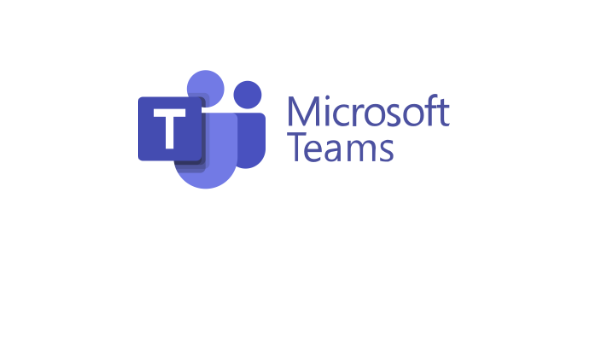
| Title of the resource/tool | Microsoft Teams |
| Language of the resource | AfricanAlbanian, Amharic, Arabic, Armenian, Assamese, Azerbaijani – Latin script, Bangladeshi (India), Basque, Belarusian, Bosnian – Latin script, Bulgarian, Catalan, Chinese (Simplified), Chinese (Traditional),Croatian, Czech, Danish, Dutch, English (United States), English (United Kingdom), Estonian, Filipino, Finnish, French (Canada), French (France), Galician, Georgian, German, Greek, Gujarati, Hebrew, Hindi, Hungarian, Icelandic, Indonesian, Irish Gaelic, Italian, Japanese, Kannada, Kazakh, Khmer, Konkani, Korean, Latvian, Lithuanian, Luxembourgish, Macedonian (North Macedonia), Malay, Malayalam, Maltese, Maori, Marathi, Nepali, Norwegian (Bokmal), Norwegian (Nynorsk), Odia, Persian (Farsi), Polish, Portuguese, Portuguese – Brazil, Punjabi, (India)Quechua (Peru), Romanian, Russian, Scottish Gaelic, Serbian – Cyrillic script, Serbian – Cyrillic script (Bosnia and Herzegovina), Serbian – Latin script, Slovak, Slovenian, Spanish, Spanish (Mexico), Swedish, Tamil (India), Tatar, Telugu, Thai, Turkish, Ukrainian, Urdu, Uyghur, Uzbek – Latin script, Valencian, Vietnamese, Welsh |
| Type of the resource/tool |
Software/tool App Website |
| Field of application |
Video conferencing Digital communication Digital collaboration Online learning and behaviour monitoring Collaborative learning online Screencasting Virtual feedback Virtual assessment Virtual learning environments Data storage and sharing Planning (calendar) |
| Methodology of using the resource/ tool |
Teams is a cloud-based video conferencing platform that can be used for video conferencing meetings, audio conferencing, webinars, meeting recordings, and live chat. The videoconferencing platform can be used for organazing and implementing distance teaching and learnning activities, where teachers and students can communicate sinchronously. In order to use this tool teachers and students should access Microsoft software using web application or download the software to computer (this is advisable for better program operation). Teacher should schedule lessons meeting time and provide the invitation links to students throught their communication channels: email, virtual learning environments, messenger, etc. Microsoft Teams is the hub for teamwork in Microsoft 365. The Teams service enables instant messaging, audio and video calling, rich online meetings, mobile experiences, and extensive web conferencing capabilities. In addition, Teams provides file and data collaboration and extensibility features, and integrates with Microsoft 365 and other Microsoft and partner apps. Microsoft Teams is a digital hub that brings conversations, meetings, files, and apps together in one place. Because Teams is built on Office 365, schools benefit from integration with their familiar Office apps and services. It delivers enterprise-grade security and compliance that is extensible and customizable to fit the needs of every school. With Microsoft Teams, your school or institution can create collaborative classrooms, connect in professional learning communities, communicate with school staff, coordinate research across institutions or more easily facilitate student life efforts like clubs or extracurricular activities – all from a single experience in Office 365 for Education. Microsoft Teams for Education comes with all the powerful communication and collaboration tools that are available to other Teams users. |
| Main functionalities |
Teams is a video-conferencing app can stream high-quality HD video and audio Particinats can share their video and stop sharing Participants can join with audio and turn off their audio
|
| Link to the resource/tool | Microsoft Teams |
| Resource/tool operating mode |
Need software instalation Web-based |
| Operating systems |
Windows MAC Linux |
| Responsive design |
Desktop Tablet Mobile |
| Resource/tool can be used for | Synchronous learning |
| Access to the resources/tool for the user | Login needed |
| Privacy and security politics | Overview of security and compliance – Microsoft Teams | Microsoft Learn |
| Pricing | Partially paid (for more features) |
Competencies improved using this tool
PROFESSIONAL ENGAGEMENT
- Organisational communication
- Professional collaboration
- Reflective practice
- Digital continous professional development
DIGITAL RESOURCES
- Creating and modifying digital resources
- Managing, protecting and sharing digital resources
TEACHING AND LEARNING
- Teaching
- Collaborative learning
- Self-regulated learning
ASSESSMENT
- Assessment strategies
- Feedback and planning
EMPOWERING LEARNERS
- Accessibility and inclusion
- Differentiation and personalisation
- Actively engaging learners
FACILITATING LEARNERS’ DIGITAL COMPETENCE
- Digital communication & collaboration
- Responsible use
Soft skills for digital tutors
Empathetic interactions while videoconferencing between the teacher and the students can improve motivation and learning. Empathy is generally conveyed face-to-face through touch, gesture, gaze, voice and posture.
To create conditions for videoconferencing participants to develope their emphaty for each other teachers should ask to turn on the cameras and microphones, this can be done with breaks, to avoid video fatigue.
Another method to develope empathy during videoconferencing class ir to assign for a co-operative group learning, it „allows teacher to engage with smaller groups of students at a time, which tends to promote profounder empathetic interactions when compared to whole-class work.“
Having students ‘check-in’ to an online class with an emoji, gif or picture about their feelings could help foster empathy when only verbal cues are present as it provides another way in which students can gain understanding in how their peer feels beyond a verbal cue.
By modelling empathic communication, enabling peer feedback opportunities, and providing conversational-style feedback, all teachers can help support the development of empathy in their students”.[1]
1. PHILLIPS EMMA, BOWLES TERRY. Helping to develop empathy in digital classrooms, 2020.
pursuit.unimelb.edu.au/articles
